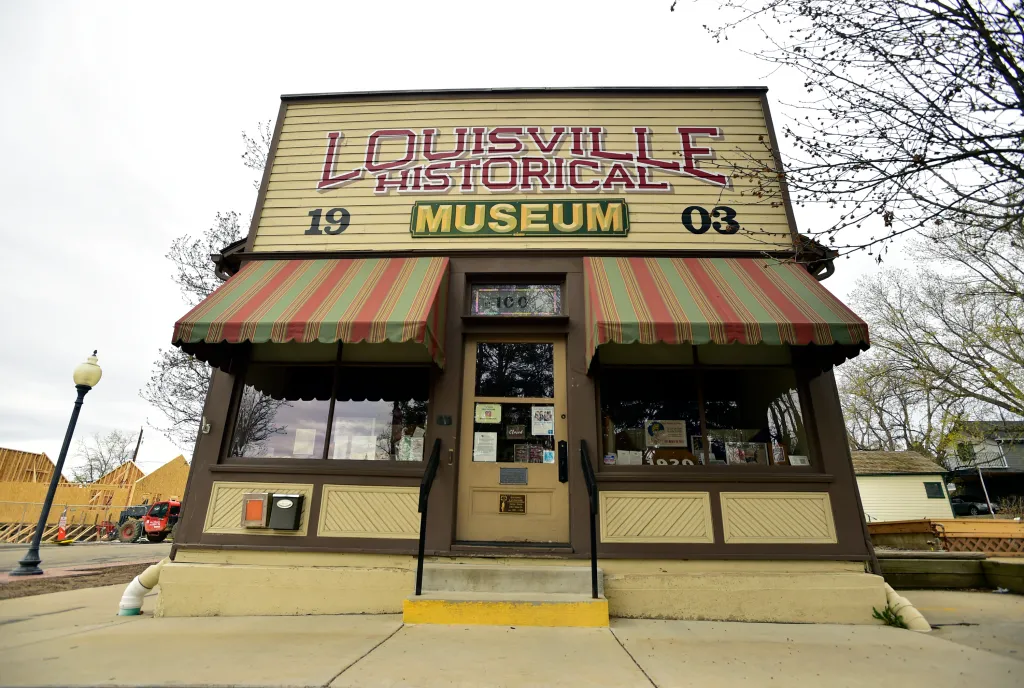
The Louisville Historical Museum and the Lafayette History Museum will host two programs this month to mark Indigenous Peoples’ Day: an educational session on Arapaho language and culture on Oct. 9, and a screening of the documentary “The Art of Home: A Wind River Story” on Oct. 24.
The Arapaho were “some of the earliest people in the area now known as Boulder County but were forced out of the (general) area in the late 19th century through violence and broken treaties,” said Chelsea Hahn, director of the Lafayette History Museum.
“As a museum in the area, we think it is vital to acknowledge this dark part of our history, because it still has repercussions even today,” Hahn added. “The history of Lafayette often gets flattened into just being a coal town, but there is a wide and diverse history of the city, and much of it actually began before the city was even founded. We hope the community learns a new story about the history of this area — and that this program will be one of many steps to recognize the Indigenous history of the place many of us live and work.”
The Louisville Historical Museum website hosts several resources to learn about Indigenous history and culture, including in its Louisville timeline, a link to a native land map, and a virtual exhibit called “Indigenous Roots,” which features guides about Arapaho names and uses for native plants.
Arapaho Culture and Language program: 6:30-8 p.m. Oct. 9, at 775 Baseline Road in Lafayette
On Oct. 9, Fred Mosqueda, the Arapaho Language and Culture Program coordinator for the Cheyenne and Arapaho Tribes of Oklahoma, will share the history of the Southern Arapaho tribe in Boulder County and the work he is doing to preserve the traditions and language of his tribe. This event is cosponsored by the Louisville Historical Museum and the Lafayette History Museum. It begins at 6:30 p.m. and will be hosted at the Lafayette Public Library. Registration is requested through an Eventbrite webpage.
Mosqueda has been working for the Cheyenne and Arapaho Tribes since 1988, according to Hahn. His grandmother, mother and other relatives taught him to speak the Arapaho language, according to Hahn.
“This is so important, because there was a systematic push by the U.S. government throughout history to stamp out the culture, traditions and languages of Native people,” Hahn said.
Staff from the Lafayette History Museum will also be joining the Louisville Historical Museum for a consultation with Mosqueda about the Native American Graves Protection and Repatriation Act, a federal law passed in 1990 regarding Native objects in museum collections, Hahn said.
Film Screening: The Art of Home: 6-8 p.m. Oct. 24, at 801 Grant Ave. in Louisville
At the Louisville Arts Center on Oct. 24, attendees can meet producer and director Jordan Dresser, a member of the Northern Arapaho Tribe, at a screening of the documentary “The Art of Home: A Wind River Story.” The screening will be followed by a Q&A session with Dresser. The documentary follows the story of two Indigenous artists — Ken Williams (Arapaho), an artist in Santa Fe, New Mexico; and Sarah Ortegon (Shoshone), an actress in Denver — as they create new artwork and reflect on their tribal homelands, the Wind River Indian Reservation. Registration is requested through an Eventbrite webpage.
Dresser, a producer on the documentary directed by Mat Hames, said he hopes viewers will walk away with “a greater understanding of indigenous art and how it is still thriving today. … Native people have meaning behind everything that we do, including our art. It is a reflection of ourselves, families and our tribes that we come from.”
Events like this contribute to conversations about Indigenous Peoples’ Day by celebrating Native culture, Dresser said, and “by showing how strong Native people are and how these cultures and traditions were still passed down despite the trauma we have been through. It shows the power of perseverance.”